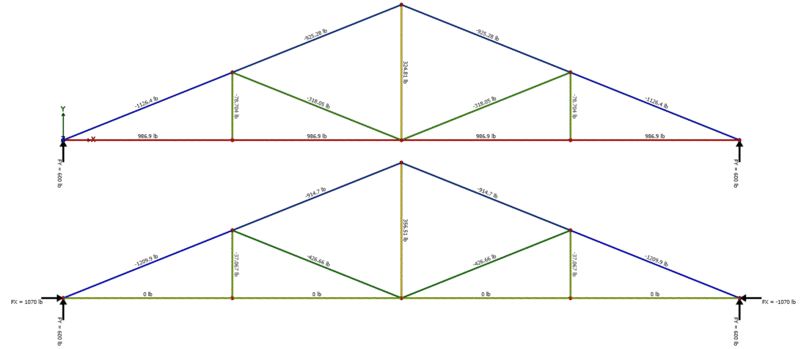Say you have a single-story masonry structure with bond beams and wood trusses with an overhang. For lateral wind, most engineers would agree the wall is braced at the top by the trusses that bear over them (axial load into the end of the truss), which will "push" that load into the diaphragm. In this situation, each end of the truss is assumed to be "pinned" to the wall below due to wind acting in either direction.
Trusses are typically designed to accommodate some horizontal displacement at one end. When this displacement is restricted (as mentioned above), a large horizontal thrusting reaction may develop on each side.
I don't see many engineers accounting for these horizontal reactions, yet we're requiring that trusses be pinned on each end. Are most engineers ignoring this?
Trusses are typically designed to accommodate some horizontal displacement at one end. When this displacement is restricted (as mentioned above), a large horizontal thrusting reaction may develop on each side.
I don't see many engineers accounting for these horizontal reactions, yet we're requiring that trusses be pinned on each end. Are most engineers ignoring this?


